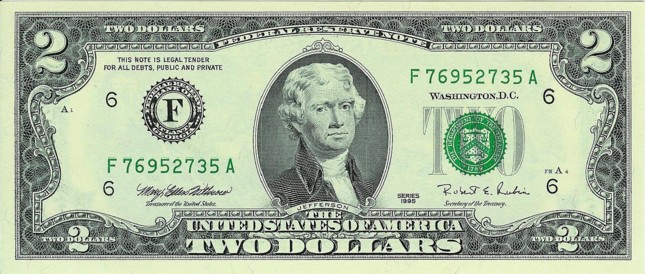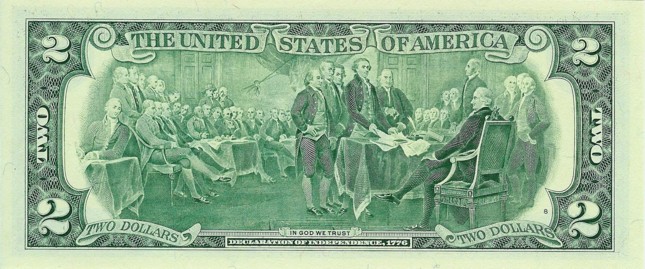1917 2 Dollars Legal Tender Note
The following note is a 1917 Legal Tender (also known as a United States Note or Red Seal Note) featuring Thomas Jefferson. This large sized note is known also as the Bracelet Note due to the design on the reverse featuring two types of ovals and two types of shields. The vignette on the front seems to hearken back to an older time, even for 1917. This is because the front design of the note goes back to 1869. There were minor changes made on this note between 1869 to 1917, such as the red seal size and the serial number area. The design on the reverse of this notes dates back to 1875. Like the other Legal Tenders of the time, this note has the restriction from being used to pay duties on imports and interest on the public debt, along with the warnings for counterfeiting.
1917 was a turbulent year. In January a munitions factory in Kingsland, NJ (Now Lyndhurst NJ), was sabotaged by German and Austrian spies, completely destroying the building. President Woodrow Wilson, hoping to stay out of the war, declared that he hoped for “Peace without victory”. Nevertheless, the USA bought the Danish West Indies for $25,000,000 in fear that the Germans would defeat the Danish and occupy the islands. After interception of a German message the Dutch Exotic Dancer Mata Hari was arrested in Paris in February on suspicion of spying for the Germans. She maintained her innocence and, even though the message was sent in a code that the Germans knew the French had broken, she was convicted and executed on October 15th. By March the US publicly released the Zimmerman Telegraph, which was another intercepted message, this time from Germany to Mexico declaring it’s intentions to make war against the United States. By April 6th, the US declared war on Germany. In June, the first Pulitzer Prizes were awarded, and the next day the US began it’s draft for the military. Later that month, Ford Motor Company rolled out it’s second million Model T car. Then on November 15th, 33 women picketed the White House for the right to vote and were jailed for obstructing sidewalk traffic. That night began their torture: Lucy Burns was handcuffed high on the bars and beaten. Dora Lewis was beaten and thrown against a metal bed, knocking her out. Seeing this caused her cellmate to have a heart attack. Another woman, Alice Paul, went on a hunger strike. For weeks she was forcibly fed with a tube down her throat until she would vomit. They were released only when word of their ordeal made its way to the papers. In the United States, women would not get the right to vote until 1920.
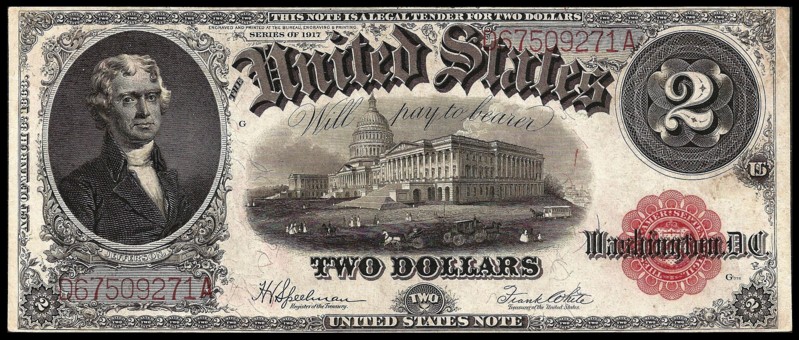
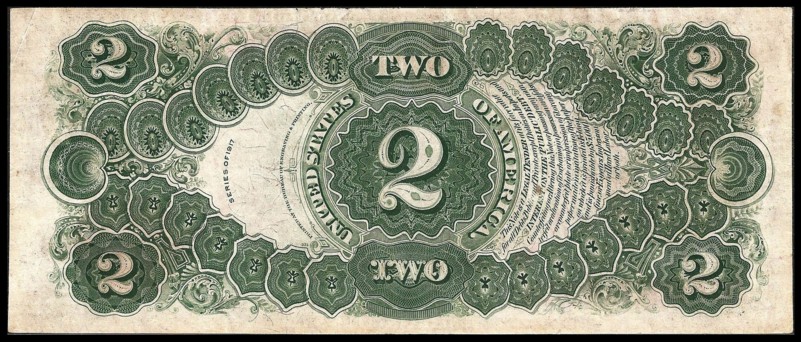
1928C 2 Dollars Legal Tender Note
Here’s a red seal United States Note (Legal Tender Note) dated 1928C. These notes were actually a direct obligation of the government, not a bank. This particular note was the first money ever earned, and saved, by my wife’s maternal grandmother, Jadwiga Szczepaniak, after she immigrated to the US from Poland after WWII. The ragged condition is no doubt an indication of how hard she had to work in the Chicago factory to earn this.

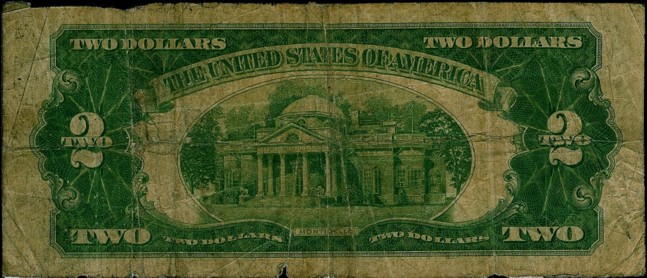
1928G 2 Dollars Legal Tender Note
This is a cleaner version of the above note, showing more detail, a 1928G series. This note design was issued until 1953.

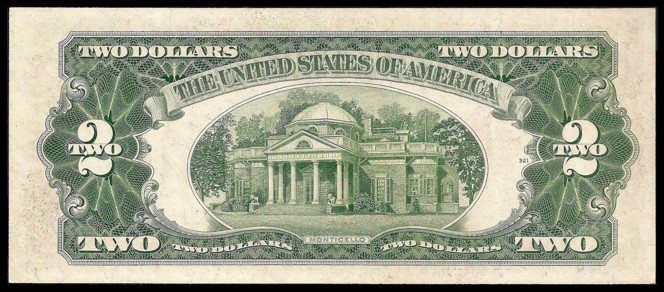
1953 2 Dollars Legal Tender Note
This 1953 note’s design was updated with the seal moved to the right, a gray 2 on the left, placement of the series date and the size of the serial numbers.
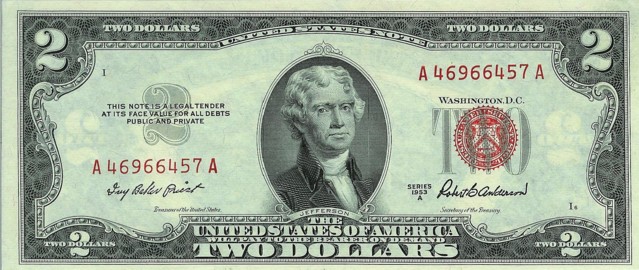
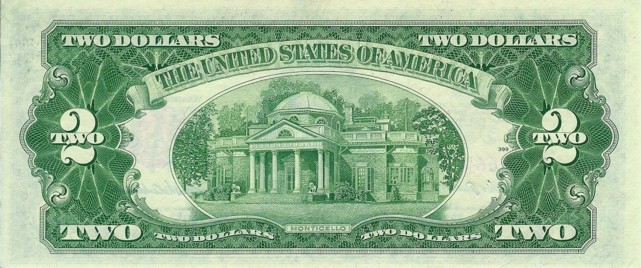
1963 2 Dollars Legal Tender Note
This 1963 note’s design changed the redemption clause to the one that we still use today. It reads as follows:
This note is legal tender for all debts public and private. The $2 U.S. / Legal Tender Notes were issued until 1965.
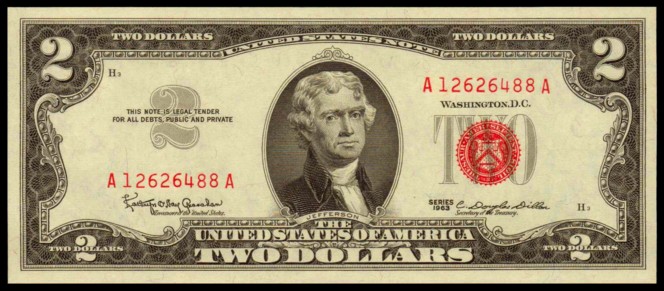
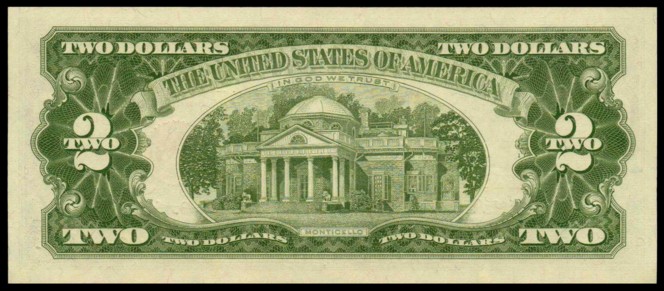
1996 2 Dollars Federal Reserve Note
Above is the Federal Reserve $2 banknote from 1996. After the US $2 Notes were discontinued in 1965 (with the 1963A series date), no $2 bills were printed again until 1976. In celebration of the nations Bicentennial, the reverse was depicted with a scene of the signing of the Declaration of Independence.
